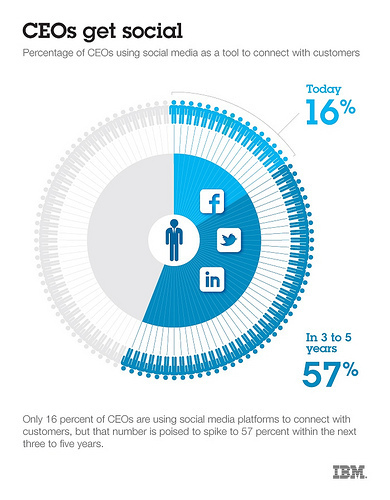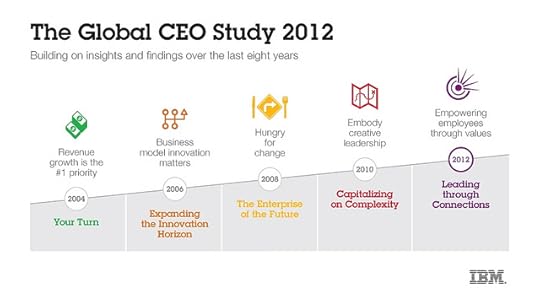Jeremie Averous's Blog, page 142
December 8, 2012
Must Read: “Makers” the Manufacturing Revolution
Chris Anderson, the author of “Free” and “The Long Tail“, and editor at Wired, has produced another great book to help us understand what is happening today: “Makers“. A must read for your holidays!
December 6, 2012
Monitoring flu trends in real time… thanks to Google!
Google is known for weird projects that make sense. Here is a great project – Flutrends. This tool give instantaneous measurement of the flu epidemics level based… on the number of searches related to ‘flu’ on Google! This turns out to be quite an efficient way of crowdsourcing the information.
Here is an example of a historical graph for France
(more info and more countries covered on Google Flutrends - the same tool also covers Dengue)
What are the troves of data that are available but not exploited by those companies like Google (or at least, not given out to the public?)
As usual I am aghast at the power of the Fourth Revolution. Do you know other similar examples? Please comment!

December 4, 2012
The Fourth Revolution and the CEO mindset’s transformation
The latest IBM CEO study gives some interesting insights into how CEO’s role and priorities change over time. In 2012, this study of more than 1,700 CEOs came with 3 strong topics:
For Employees: Empowering Employees through Values
For Customers: Engaging Customers as Individuals
Amplifying Innovation through partnerships
The study highlights that now at last CEOs of large corporations see that investing in internal social networks (for collaboration) and external social networks (for engaging customers) is mandatory.
One conclusion of the study is “As CEOs ratchet up the level of openness within their organizations, they are developing collaborative environments where employees are
encouraged to speak up, exercise personal initiative, connect with fellow
collaborators, and innovate“.
While only 16% of them do it now, in 3 years time it is expected that a majority of them will get on external social networks:
It is interesting to note how the focus of CEO’s changed in the past decade or so
We can see how the focus changed from revenue growth to change, accounting for complexity and leveraging on employees. This looks like the trajectory of the Fourth Revolution revealed! It is clear that CEOs are “abandoning command and control” (link to an excellent paper by Alexandra Levit) to more collaborative ways of working. This Forbes article “If you don’t have a social CEO you are going to be less competitive” is also a great reference on the IBM study.
There is obviously a big limit to this study: it only considers corporations. When will the corporations feel that they might not be the best value-producing form of organization? When will IBM also study what happens in other organizations? Already today the CEOs need to be much more entrepreneurial. This trend will only further develop and grow. I’m already looking forward to the next studies!

December 1, 2012
Useful Reminder: We Are All Artists Now
Useful reminder from Seth Godin in this short manifesto inspired by his last book to be published at the end of the year: We Are All Artists Now (click to view on ChangeThis).
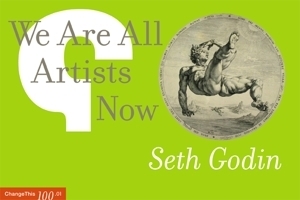 There are some nuggets in there, like:
There are some nuggets in there, like:
” Why Make Art?
Because you must. The new connected economy demands it and will reward you for nothing else.
Because you can. Art is what it is to be human.”
Or:
“Art isn’t a result; it’s a journey. The challenge of our time is to find a journey worthy of your heart and your soul.”
A good and inspiring week-end read. Enjoy!

November 29, 2012
Perfecting the Rules for Crowdfunding: Reminding about the Risk!
Crowdfunding is still polishing its model. In September 2012, to make they would remain true to the ideals of crowdfunding, Kickstarter did a significant change to its rules. Conscious of some deviations and criticisms, the new rules aims at making sure that people do not mix up crowdfunding and purchasing new items (follow the link to Kickstarter’s announcement “Kickstarter is not a store”).
This came after some hefty criticism that some of the projects did not deliver to the funders the goodies that were supposed to be delivered (because you don’t crowdfund for free – refer to our post “Crowdfunding is not charity – and it is not free!”).
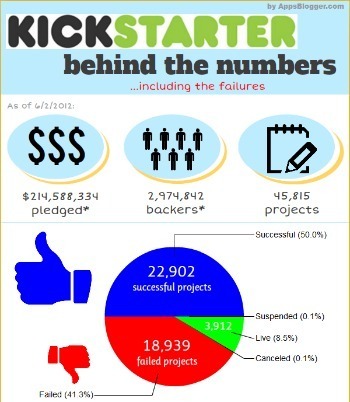 It is a good reminder that crowdfunding projects do entail a significant amount of risk – the risk of innovation. Some will fail, and even the products that are to be developed by big names might end up being disappointing! This is the game of innovation, and statistically failure will happen; and so-so results will be the majority. The infographics gives some statistics as of June 2012 on the ratio of failure to successes; a more detailed infographics is here.
It is a good reminder that crowdfunding projects do entail a significant amount of risk – the risk of innovation. Some will fail, and even the products that are to be developed by big names might end up being disappointing! This is the game of innovation, and statistically failure will happen; and so-so results will be the majority. The infographics gives some statistics as of June 2012 on the ratio of failure to successes; a more detailed infographics is here.
It will be tough for Kickstarter to maintain the clear message that Kickstarter projects, although filtered out by the crowd, are still risky endeavor and that the thrill is to follow the people try hard and maybe fail. Crowdfunding will remain an isolated island in our world of quick and immediate gratification; and those reminders from crowdfunding organizations will necessarily have to be repeated often, again and again so that we don’t forget that it is some kind of risky venture investment.
Nevertheless, it is good to see how the crowdfunding model is getting refined to stay close to its true calling. It will probably take another couple of years until the model is really settled (enough time so as to have enough feedback from completed projects – as they only start to really trickle in after the enthusiasm of their initial launch). Let’s follow up how that evolves!
The infographics is by Appsblogger.com; follow this link for the full infographics; and this link for the blog post on “Kickstarter failures revealed”.

November 27, 2012
Find the Door to the Promised Land – Just Believe in Yourself
For some reason these lyrics from the Scorpions song “Send me an Angel” resonated very much with me lately:
“The wise man said just raise your hand
And reach out for the spell
Find the door to the promised land
Just believe in yourself
Hear this voice from deep inside
It’s the call of your heart
Close your eyes and your will find
The way out of the dark
Here I am
Will you send me an angel
Here I am
In the land of the morning star…”
How often do you listen to the call of your heart – and then believe in yourself? Trusting yourself is probably the most liberating mindset you can have. Trust yourself a bit more today. And tomorrow. And the day after. It is worth it.

November 24, 2012
How the Anonymous are a Precursor of the Collaborative Age Organization
This interesting article in the Guardian “Disorganized but effective: how technology lowers transaction costs” highlights how lower the transaction costs has allowed the development of such amorphous groups such as Anonymous or the Occupy movement.
 Interestingly, the article takes a perspective on the dramatic change of our capabilities in terms of ‘transaction cost’ that is very similar to our Fourth Revolution concept based on our communication capabilities. It is the same of course. The previous Fundamental Revolutions always saw the creation of more organized bureaucracy – the Agricultural Age’s bureaucracy paving the way for the Industrial Age’s Corporation. The Fourth Revolution is the era of chaos and complexity. And for the first time we can organize chaotic groups that deliver effectively.
Interestingly, the article takes a perspective on the dramatic change of our capabilities in terms of ‘transaction cost’ that is very similar to our Fourth Revolution concept based on our communication capabilities. It is the same of course. The previous Fundamental Revolutions always saw the creation of more organized bureaucracy – the Agricultural Age’s bureaucracy paving the way for the Industrial Age’s Corporation. The Fourth Revolution is the era of chaos and complexity. And for the first time we can organize chaotic groups that deliver effectively.
Not just the Anonymous, Occupy, other activists but also many groups that are not so much on the dark side, like all the Open Source movement: these are all amorphous groups without visible structure; their weak structure is constantly evolving and never fixed, completely akin to turbulent flow. They rely heavily on technology to communicate, using automation and a choice of synchronous and asynchronous tools.
These groups are in advance on their time; soon we’ll all participate to such groups because chaos begets creation, the value engine of the Fourth Revolution. They are the real precursors of the Collaborative Age turbulent organization.
Welcome to a chaotic, and effective world - Welcome to the Future of the Organization!

November 22, 2012
On which Organizational Plateau is your Company?
Verne Harnish (author, consultant and entrepreneur), a specialist of small companies, has a great insight: there are relatively stable plateaus for company size, separated by steep “Valleys of Death”. Here’s what it looks like (numbers based on US statistics):
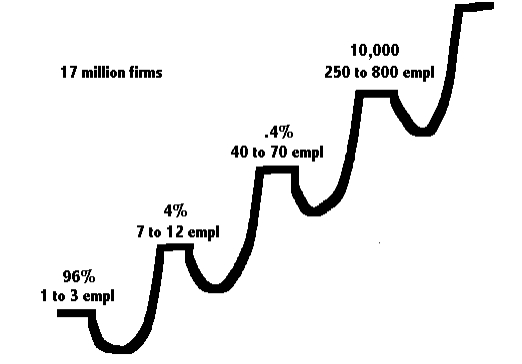
The companies’ development plateaus
The explanation goes, each plateau corresponds to a more or less stable organizational form; however to be able to transition from one plateau to the other, a significant transformation needs to happen in the way the company is run. And this transition is tough, because it will shake the organization and established areas of power; while at the same time the company still needs to run its operations and make money.
For example, from the 1-3 employees plateau to the 7-12 employee plateau you need to establish systems and cannot any more rely on people doing everything; then to jump to the 40-70 employees plateau you need to establish a management team and cannot manage everything directly any more, etc.
Your organization might be on such a plateau right now. Be aware of the looming “valley of death” that separates you from your growth target. How experienced are you with the new organizational form you want to reach? How ready are you to get through the tough re-organization it will require?
Many thanks to John Warrillow’s blog (Built to Sell) and his always very inspiring insights for the idea and the picture

November 20, 2012
5 Conditions that Foster Your Creative Mood
Coming back to John Cleese take on creativity, let’s dwell a little bit on his 5 conditions that make it easier to reach an open mode, which enables creativity:
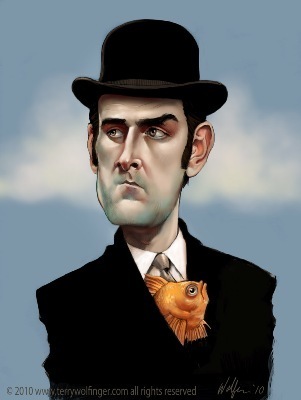 Space (quiet space – isolation of usual pressures and demands)
Space (quiet space – isolation of usual pressures and demands)Time (create space for a specific period of time where normal life stops) – create also boundaries of time to stop!
Time (sleep on it – leave time to mature the solutions you’ve found – even several days)
Confidence (which is required for playfulness – be free to play and look at the unexpected). When you’re being creative nothing is wrong!
Humor – gets from the “closed” to the “open” mindset mode the quickest
Further more, John Cleese emphasizes that even if encounters and discussions are great to create new ideas through the encounter of two different frameworks, isolation and time are also needed to mature them.
Once again we find creativity at the contact point of a contradiction between social encounter and personal reflection. Creativity needs both in harmony and not in conflict.
If you are outgoing, do you also take enough quiet time? If you are introvert, do you socialize enough? Balance is the key to exploiting these apparent contradictions!

November 17, 2012
Creativity is not a talent – it is a way of operating. Practice your Open Mood!
If you are intrigued by the mysteries of Creativity like I am, you need to watch this video of a speech by John Cleese on the subject.
Click here if you can’t see the video.
John Cleese is obviously a Master Creator full of weird ideas. In this video he explains how it is important to practice a creative mindset - ”A mood – an ability to play – the most creative were in this mood as being child-like”, an ”Open mood” -relaxed, expansive, less purposeful mode in which we are more contemplative, more attuned to humour and consequently more playful versus our usual “Closed mood” mode.
Furthermore John Cleese goes on to explain how it is vital to practice this open mood even if the result is not great every time.
Creativity is thus the result of the practice of an open mindset. When do you start practicing?



